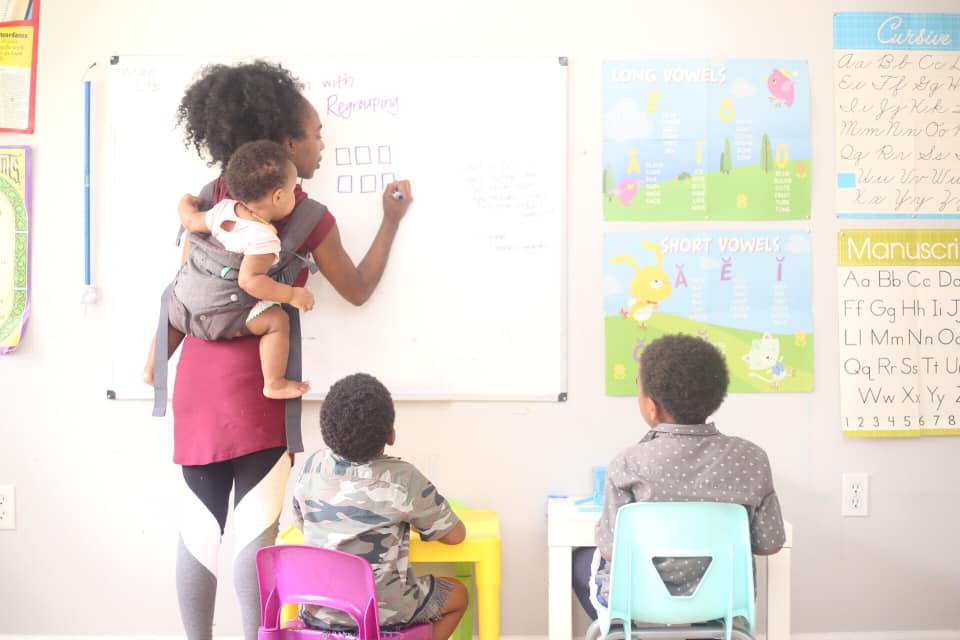This post is sponsored advertising content by State Farm®.
Marriage, a home renovation, and parenthood have one thing in common: They’re all life-changing events that can have a significant impact on your finances. Few life events compare to the experience of joining the ranks of parenthood and welcoming a new life into your family. The financial impact is often swift and drastic. According to a report released in 2017 by the United States Department of Agriculture (USDA), the projected cost of raising a child born in 2015 to age 17 is $233,610. This does not include the cost of college tuition or a private education.
With these exorbitant costs, it’s no wonder the U.S. birth rate is at its lowest level in 32 years. Now I don’t want to scare you out of parenthood, that certainly isn’t my intention. I do want to share my first-hand knowledge. “Mother” is a fairly new title to me. I welcomed my first child, Karris, almost a year ago and learned so many lessons along the journey. In fact, I am still learning about myself, Karris, motherhood and finances.
On this episode of Color Full Lives, presented by State Farm®, Angela Yee, Aminatou Sow and I discussed the financial lessons learned while parenting. Our special guest “mompreneur,” Yahya Smith of Feminine Success School, imparted some of her veteran financial and parenting wisdom to us.
Here are five important financial lessons from our interview with this amazing woman:
1. Save, save and save some more.
Save more than you anticipate needing. You can never be too prepared. There are so many expected and unexpected expenses associated with having children. Although my husband and I were financially prepared, we surpisingly spent $4,000 in our son’s first three weeks of life. Between childcare, doula expenses and last-minute purchases, the expenses quickly racked up.
Employer parental leave policy, childcare and out-of-pocket healthcare expenses, such as doulas and/or midwives and birthing classes can have a significant financial impact. Be sure to check with your employer and insurance provider to confirm your coverage. A robust savings account will provide a cushion for these expenses.
2. Invest in your child’s future.
Once your child arrives, you and your loved ones may rush to purchase the latest toys and designer clothing. Angela admits that she enjoys looking at children’s clothing and is often tempted to purchase items for her godchildren and many cousins. Remember that gifts don’t always have to be material. Children quickly outgrow toys and clothes. Consider purchasing assets and not liabilities.
Gifts such as stocks and bonds appreciate in value. This does not necessarily mean to never purchase toys or clothing, but instead, set boundaries with yourself and loved ones regarding gifts. Investments may provide a strong financial foundation and framework for the future.
3. Start financial literacy lessons at a young age.
As parents, our financial habits can often dictate the habits of our children. Aminatou (Amina) recalls how her father’s transparency regarding the family finances provided her with a scope of the cost of life.
One of the greatest financial lessons we can impart to our children is the value of saving. This is one practice that they can carry into adulthood. The sooner children begin to save, the faster they will see their money grow. Savings can help purchase a desired item or even assist with family obligations. I remember using my savings to purchase my first pair of Air Flights. As a child, Amina used her cherished savings to help her parents with household bills. This taught her self-sufficiency.
4. Invest in their education.
Education starts at home and isn’t limited to the classroom. Yahya shares that she and her husband are their children’s primary educators. They homeschool their four children. This also includes instruction about farming and sustainability. If you are interested in homeschooling your children, she offers the advice of remaining flexible to your child’s learning style and developing a dynamic, versatile curriculum. Investment in education also extends to providing financial support for college and/or training programs.
The average annual cost of a public, in-state college is $10,116 and $36,801 per year at a private college. A 529 Savings Plan can help defray the cost of a college education and may help your child graduate without amassing a large amount of debt. Also consider exploring community colleges, continuing education programs, training programs and scholarships. Remember that education does not stop in the classroom.
5. Plan for emergencies.
Life insurance is often taboo for certain communities. Let’s reframe this often-uncomfortable subject by highlighting its importance. In the unfortunate case of death, life insurance provides our loved ones with the ability to pay off debt and the financial freedom to handle our affairs. Yahya shares that both she and her husband have life insurance policies as a contingency plan for their family. Since she often travels for work, she appropriately prepares for the worst-case scenario and ensures that her children are covered with their life insurance policies.
Yahya also discusses using life insurance policies as a wealth builder. Yahya’s mother-in-law utilized one of her child’s life insurance policies to provide the start-up capital for the family’s business. This was a solid financial plan that created more opportunity to invest in something worthwhile.
Our discussion was so enlightening, even I learned new lessons regarding money. You can listen to this episode and catch up on the rest of Season 5 here.
This post was sponsored advertising content by State Farm®.

You said: